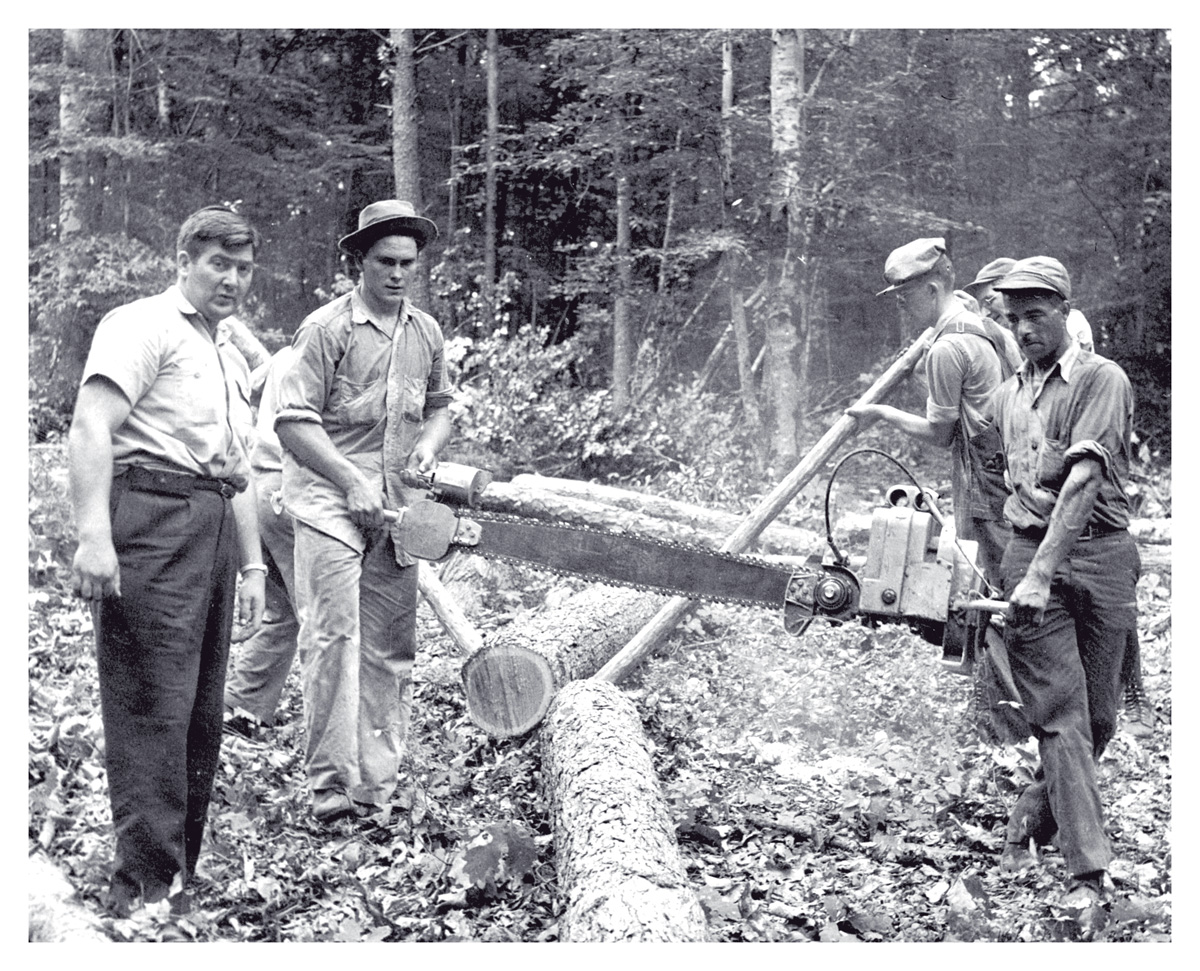Arborists have an established culture in today’s society, but it didn’t happen overnight — it took over 100 years to get where we are today. Early American settlers discovered a land with forest wealth beyond description. From the white pines in Maine to the giant redwoods in California, by the end of the 19th century, America had tamed enough wilderness, built enough city and made enough money to be ready to assume a stewardship role in caring for urban trees. Thus, began the growth of the tree care industry, profession, art and science that we recognize as arboriculture today.
Early 1900s
By 1907, the Bartlett and Davey Tree Expert companies were already well-established. Both companies as well as others recognized that training, research, new product and technique development was critical to a successful business plan. Very early on, both firms as well as others, established research centers, laboratories, training schools and shops to build specialized equipment.
In 1917, Lem Stout, one of the early iron men of Bartlett Tree Experts, was among the first in recorded arboricultural history to tie in to a tree with manila rope for safety. Arborist Millard F. Blair also graduated during this time period from the University of Minnesota, St. Paul Campus School of Agriculture with what may have been the first course of study designed specifically for the pursuit of arboriculture.
1920s
As the roaring 20s began, the United States began to experience a boom of prosperity. Arborists began to organize associations to help educate the public about the need for scientific tree care, and to share among themselves their discoveries and innovations. The National Shade Tree Conference (now known as the International Society of Arboriculture) was hosted and established in 1924 at F. A. Bartlett’s office in Stamford, Connecticut.
Through the rest of the decade, tree companies expanded. Improvements in pruning tools, trucks, spray equipment and cabling gear tried to keep pace with advancements in tree care practices until the big Wall Street Crash of 1929.
1930s
The year 1934 was a big one for arboriculture, and it looked like things were looking up from the ongoing economic slump. Ed Scanlon founded the Western Shade Tree Conference (WSTC), which eventually evolved into the Western Chapter ISA — the largest and one of the oldest established chapters. Then in 1938, the National Arborist Association (NAA), what would one day become the Tree Care Industry Association (TCIA) was founded. The U.S. enjoyed a few more years of economic improvement until World War II began.
1940s
The tree care industry would change when America joined the war effort in 1941. One immediate impact was in the labor force, which shrunk mightily as men joined the armed forces. Much of the progress from the 1930s was put on hold, as tree companies endured rationing periods making things like gas and tires hard to come by.
When the war ended in 1945, more soldiers returned home and many returned to tree work. Things were changing for the better in the United States, which emerged from the war as an economic superpower. Gary Vermeer started Vermeer Manufacturing Co. in 1948, which would later become a leader in the tree care industry.
Several innovations also came out of the war, including the development of new materials and machine designs — nylon, mist sprayers and the development of the one-man chain saw are perfect examples. As the 1940s wound down, tree care businesses put the war behind them and were back to work and busy establishing themselves as professionals.
1950s
The tree care industry in the 1950s reflected some of the major trends of the decade in the United States. In 1950, the NAA reported 162 members, an increase of 13 over the previous year. By decade’s end, the membership had grown to 188. The growth of suburbs and need for electricity created opportunities for electrical line clearance work, which became an expanding market for tree care. In 1957, Vermeer created the industry-leading design for a stump cutter using a horizontal cutting design that is still being used today.
The surplus of war equipment also became a hot commodity among arborists — many were able to purchase trucks and power wagons at significantly reduced prices. The equipment saved man-hours and made the work easier than changing the practices of tree work. As brush chippers and the like became more common — a new focus on safety emerged from the National Arborist Association. However, some arborists were very reluctant to take on new safety practices — several safety rules were written but often neglected.
1960s
The 1960s was a decade of change — the 60s are remembered for a controversial war, student demonstrations and a mass media explosion that brought social and cultural revolt. In the tree fields, equipment such as chippers and chain saws were being improved and several new models were coming out. A few notable examples include the Kuemmerling-Fitchburg side-feed brush chipper, McCulloch Mac-6 model chain saw and the Homelite Super XL (extra light) chain saw. The lighter equipment was easier to handle, but early models didn’t always hold up to the rigors of tree care.
Marching on…
Stay tuned for more highlights in the history of tree care in our upcoming part two of the “Arboriculture through the ages” blog series.
Visit the Tree Care Industry Association website for membership and business resource information.
For more tips and trends in starting your own tree care business, view more articles on the Tree care, rental and landscape blog.
This article and featured photo were contributed to with the help of the Tree Care Industry Association (TCIA) historical archives:
TCI Magazine July 2013
TCI Magazine June 2013
TCI Magazine May 2013
TCI Magazine April 2013
